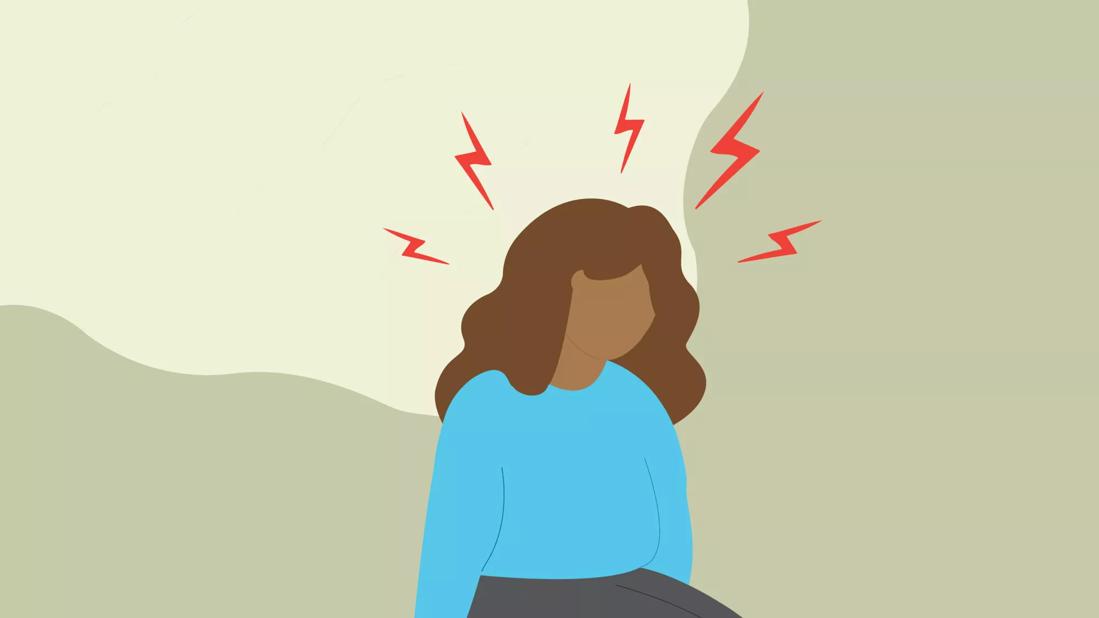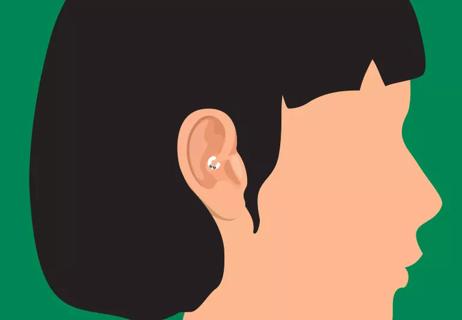Migraine length depends on your triggers, health history and whether they are chronic

You look at the clock. It’s been over an hour. That’s 60 long minutes of your head still pounding from a migraine. Depending on what you’re used to, you may be wondering: Is this normal?
Advertisement
Cleveland Clinic is a non-profit academic medical center. Advertising on our site helps support our mission. We do not endorse non-Cleveland Clinic products or services. Policy
If you live with migraines, you know that when that head pain hits, it can be debilitating. And that pain can continue for anywhere from a couple hours to several days. And in some cases, migraines can go on for even longer — and what’s normal and not normal depends on a number of factors.
Julia Bucklan, DO, explains the common length of migraines — and when you should see a healthcare provider.
Not all migraines are created equal. Because they’re such a prevalent and complicated medical issue that there are a lot of categories for different types of migraine attacks. To understand the common length of migraines, it’s helpful to know how migraines are categorized.
According to the International Headache Society (IHS), here are some of the different types of migraine categories that affect the length and duration of the migraine:
The length of your migraine can depend on the type of migraine you experience.
Two of the main migraines are migraines with aura and migraines without aura.
Migraine with aura is a type of migraine characterized by the presence of neurological symptoms, referred to as aura. These disturbances can occur either up to an hour before or right in the middle of a migraine headache.
Advertisement
“For example, if someone has a complicated aura with multiple symptoms — like visual disturbances, sensory changes and difficulty speaking, the migraine can last up to 180 minutes,” explains Dr. Bucklan. In some cases, these motor symptoms can last up to three days.
This is why it’s important to identify what kind of migraine you’re experiencing and what are the common symptoms. Aura symptoms typically develop gradually over a few minutes and can last for up to an hour. Common aura symptoms include:
On the other hand, a migraine without an aura is the more common type of migraine, where the headache occurs without the presence of an aura. Symptoms of migraine without aura can last anywhere from a few hours to several days.
Individuals with migraine without aura experience the typical symptoms associated with migraines, including:
The next category of migraines that’s important to understand is episodic versus chronic migraines. The difference between episodic and chronic migraines is based on the frequency of migraine attacks. So, how your migraines are categorized will depend on how often you have your migraines throughout a 30-day period.
Advertisement
It’s worth noting that the frequency and severity of migraine attacks can vary widely from person to person, and some people may experience a transformation from episodic to chronic migraines over time. If you’re experiencing frequent or severe headaches, it’s important to speak with a healthcare provider to determine the best treatment approach for you.
Overall, the average length of a migraine attack ranges between four and 72 hours, if it goes untreated. But this can vary based on a lot of factors.
The best way to track how long your migraine is lasting and what’s common for you is by knowing the stages that your migraines can go through.
While your migraine probably feels like one big continuous blob of pain, it actually can have a series of phases. And understanding these stages can help you understand the best course of treatment for you.
“I think it’s good to have the awareness of different phases,” notes Dr. Bucklan, “because lots of people don’t realize why they feel a certain way.”
Migraine attacks can be divided into four phases. Here’s what occurs during each phase, as well as the average duration of each one:
Advertisement
She also says that, in general, not everyone has all the phases. “There can be up to four phases but some people have just pain and none of the other components.”
No matter what type of migraine you have, there’s a point where you should seek medical attention.
“If it’s going past that 72-hour mark, then it’s considered what we call ‘status migrainosus,’” explains Dr. Bucklan. This is when you should definitely consider going to either the emergency room or seeking medical attention from your healthcare provider — especially if your migraine hasn’t responded to any kind of treatment.
“At this point, your treatment changes because you’re in this cycle that needs to be broken,” stresses Dr. Bucklan.
Your healthcare provider or neurologist will likely approach your migraine treatment through either preventive treatments or abortive treatments. This means that they’ll either try giving you medication that will help prevent migraines and their frequency, or they’ll give you prescription pain relievers that help stop a migraine shortly after it begins.
If you have an effective abortive medication, your migraines shouldn’t come anywhere close to the 72-hour mark — but if they do, you should seek medical attention. The length of your migraine will ideally be cut short if you begin treatment right at the onset of symptoms — usually through medication prescribed by your provider. But this will depend on when you take the medication and how long your migraine has been going on already.
Advertisement
“The goal of preventive treatment is to reduce the frequency and severity of the migraines by at least 50%,” states Dr. Bucklan.
Depending on your specific triggers, the type of migraine you have and when you begin treatment, the length of your symptoms could last as little as four hours up to a 72-hour period. If the duration of your migraines is changing, be sure to let your healthcare provider know so they can adjust your treatment as needed and help you find relief.
Learn more about our editorial process.
Advertisement

Among the options is a fast-acting medication that offers relief in as little as 15 minutes

Start by reevaluating your triggers and lifestyle factors, but also consider trying new medication

A little can help, too much can hurt

They might look cool, but there’s no scientific evidence that daith piercings ward off pain

Getting enough sleep, avoiding dietary triggers and reducing stress can provide relief

Your genes may offer some insight when learning about your migraine symptoms

If you’re experiencing the worst headache of your life, it may be time for a trip to the hospital

Dehydration, sleep issues and certain foods can lead to an early morning headache

If you’re feeling short of breath, sleep can be tough — propping yourself up or sleeping on your side may help

If you fear the unknown or find yourself needing reassurance often, you may identify with this attachment style

If you’re looking to boost your gut health, it’s better to get fiber from whole foods